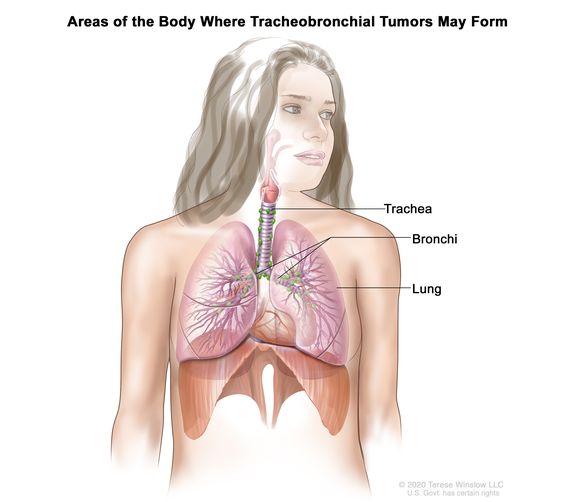tracheobronchial tumor
(TRAY-kee-oh-BRON-kee-ul TOO-mer)
A tumor that begins in cells that line the trachea (windpipe) or bronchi (large airways of the lung). Tracheobronchial tumors are rare and can occur in both children and adults. They are usually benign (not cancer) in children and malignant (cancer) in adults. Signs and symptoms include dry cough, wheezing, trouble breathing, coughing or spitting up blood, frequent lung infections (such as pneumonia), feeling very tired, loss of appetite, weight loss, hoarseness, and trouble swallowing. The most common types of tracheobronchial tumors include squamous cell carcinoma, adenoid cystic carcinoma, carcinoid tumors, chondromas, hemangiomas, and papillomas.
